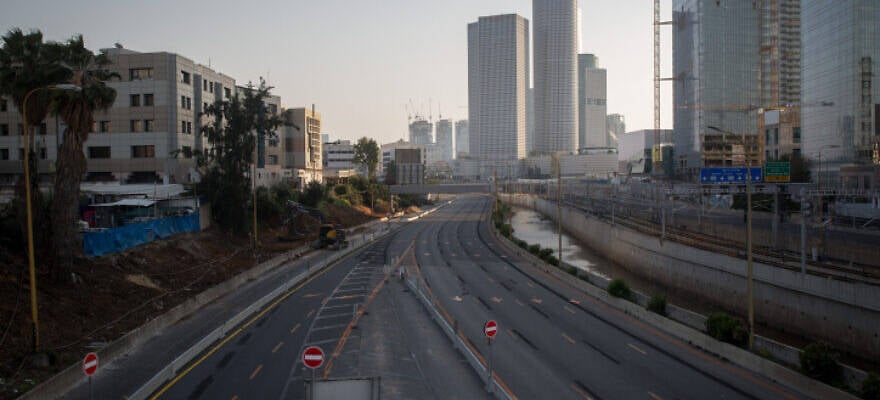The Bus Rapid Transit system (BRT) is based on advanced, high-capacity electric buses that move on an exclusive and separated transportation route.
By TPS
Israeli Transportation Minister Miri Regev on Wednesday laid the cornerstone for the Blue Line, an advanced mass transit system that will connect Tel Aviv, Rishon Lezion, Nes Ziona and Rehovot.
The Bus Rapid Transit system (BRT) is based on advanced, high-capacity electric buses that move on an exclusive and separated transportation route. The buses are given priority at intersections and traffic lights, improving travel experience and achieving more accurate arrival times.
The BRT is scheduled to begin operating in 2028. It is expected to carry approximately 77,000 passengers a day and 56 million per year.
The Blue Line will be 23 kilometers (14 miles) long, with 44 stations. During peak hours, it will operate at a frequency of every 6 minutes.
Electronic displays will be installed in the stations and in the buses, providing real-time information on location and arrival time.
Construction will cost an estimated 2.9 billion shekels ($790 million).
In Israel, the BRT system has been operating for 10 years with great success in Haifa. However, the Transportation Ministry stressed Tel Aviv’s Blue Line will feature more advanced vehicles with quiet and clean electric propulsion, and other new technologies.
The cornerstone-laying comes ahead of the Aug. 18 launch of the first line of Tel Aviv’s light rail.
The 24 kilometer (15 mile) Red Line, which connects the coastal city of Bat Yam on the southern end of Greater Tel Aviv with Petach Tikvah on the eastern side.
Originally scheduled to be launched nearly two years ago, the nearly 19 billion shekel ($5 billion) project was repeatedly derailed by malfunctions, including in its signaling and emergency braking.
The line includes 33 stations and runs from Bat Yam through Jaffa, Tel Aviv, Bnei Brak and Ramat Gan to Petach Tikvah in both directions. Half of the route is underground.
The inauguration of the Red Line is supposed to include a period of free rides, although the length of the grace period is still under discussion.
Two other light rail lines are planned. When complete, the three lines will cover a network in Greater Tel Aviv of 85 km (53 miles).
Also last week, Israeli Prime Minister Benjamin Netanyahu announced a 100 billion shekel ($27 billion) plan to link the country’s north and south by high-speed rail. Such a rail line would also allow the transport of goods from Israel to Saudi Arabia.
The proposed high-speed rail line would run about 400 kilometers (250 miles), from the northern city of Kiryat Shmona to the southern city of Eilat.
“My vision is for every Israeli citizen to be able to travel to or from the center from anywhere in the country in less than two hours,” said Netanyahu. “In most cases under an hour, and even less than that.”
